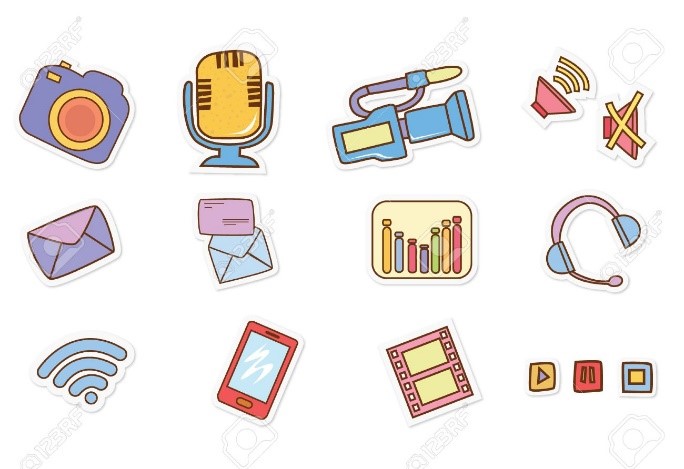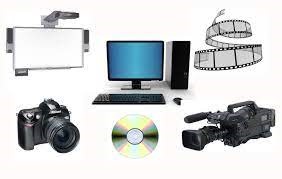Introduction
The use of audiovisual media with audio video design software has a long tradition in schools. As early as the 1920s, school radio and later school television were used in the classroom. In the meantime, the use of audiovisual media in schools has become indispensable. At this point I would like to give an overview of how audiovisual media is currently being used in the classroom, what purpose such media use serves and what function it fulfills in the classroom. We then show some problem areas that are involved in dealing with audiovisual media and conclude with a preview of future developments in the field of media didactics.
What is media?
In general, all information carriers are referred to as media. In didactic contexts, the term media also includes the device itself, although it is not an information carrier in its own right. With all media, a distinction is made between hardware, the device itself, and software, the content that is fed to the hardware. Media can be generally classified according to the following criteria:
a) Personal media (words, gestures) and non-personal media (e.g., television)
b) In-house production, i.e., self-produced material and third-party production
c) Teaching media (e.g., film, radio) and teaching media (e.g., school radio, school television)
d) Didactically neutral media that is not produced specifically for teaching
e) function-specific media that is produced for teaching purposes and present a fact in a simplified manner
f) Self-teaching media such as learning programs
What is audiovisual media?
All media that address the auditory and visual senses simultaneously, i.e., ears and eyes, are referred to as audiovisual media.
Classic audiovisual media
Classic audiovisual media include records, audio tapes/cassettes, slide shows, slide shows, school radio and school television, 8mm films, 16mm films, television, video and CDs.

New Media/Multimedia
New media/multimedia combine different code systems (text, images, graphics, film, etc.) and at the same time address the auditory and visual senses. Under multimedia you can take computer-aided learning programs, the personal computer or the Internet. Digital photography, digital video, image and editing are some of the ways to work with multimedia.
Use of audiovisual media
The advantage of audiovisual media lies in the simultaneous linguistic and visual representation of facts. Various project management software use audio visual media for different purposes, e.g., explainer video, product descriptions, among others. That is where AV Management CRM solution for installation comes into consideration. A fact has a more interesting effect on the recipient if the (auditory) information is presented visually at the same time. As a result, the viewer’s attention can generally increase. A pictorial representation can also provide clues as to what the recipient should direct their attention. Furthermore, a situation can be described in its entire complexity or presented in a simplified way, as required. In the school context, audiovisual media is teaching aids.
Function of audiovisual media in the classroom
Like all media used in the classroom, audiovisual media have multiple functions. This is intended to motivate/attune the learners, direct the activity, present and/or discuss an issue. In addition, they can be used for the purpose of repetition, practice, and summary and success control. However, the latter functions hardly come into play.
In current school lessons, the functions of presentation and motivation, Audio cassettes, audio image series, records, films, videos and CDs are used most frequently. Audio cassettes, records and CDs are used primarily for motivational purposes, while films and videos are mainly used for presentation and motivation. The media is often used very early or at the beginning of a teaching phase/unit and mostly serve the mere enrichment, i.e., “an additional support and enrichment of teaching processes”.
Use of audiovisual media in the classroom
There are countless ways to use audiovisual media in the classroom, workflow management software is one of the instrument to make things easier and smooth. The possibilities are in turn determined by many different factors. To present all these possibilities and variations exhaustively would be too extensive at this point. The intention is to show a general trend in the use of audiovisual media.

In the last few decades, audiovisual media have mainly been used as an enrichment, to loosen up and enliven the lessons. Here the teacher stepped back behind the medium, but retained his guiding role. Audiovisual media was used at the beginning of a series of lessons to get the students in the mood for the topic, and they also served to motivate them at later points in time. The focus here was on a passive-receptive role for the students.
With the advent of the mass media, a new focus has emerged in the use of audiovisual media. The media itself becomes the subject of teaching within the framework of media education. This makes the ability and willingness to analyze wanted and unwanted, identified and unidentified media.
The choice of the medium
There are many factors that determine the choice of audiovisual medium in school lessons, such as didactic goals, curricula, didactic methods, or formal media properties. The general willingness of the teachers to use media in the classroom, the organizational effort, technical knowledge, the saturation effect with some media, the interest of the students and the equipment of the schools will certainly also determine the choice of audiovisual medium.
The number and variations of the determining factors is so confusing that there have been numerous attempts to classify and structure these factors since the advent of media in school lessons. But even the development of different media taxonomies did not result in a satisfactory classification. Due to the theoretical deficit, the teacher ultimately has to decide on his own how to use the media.
General criteria for the use of audiovisual media
Experts created some general criteria for the selection of audiovisual media;
Originality means that information is changed as little as possible so that the student has authentic access to the materials. This point deserves attention, especially in view of the increasing possibility of manipulating the media.

The focus on the addressee is intended to ensure that the abilities of the media user are neither overstretched nor under-stretched. This need arises from the different anthropogenic and socio-cultural abilities of the students.
Up-to-datedness presupposes that only the most recent information about an issue is selected, because optimal knowledge can only be gained with the most up-to-date information. There is no need to point out the importance of this criterion in times of mass information and globalization.


